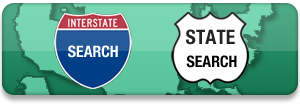Curious about touring one of the most haunted destinations in the US? The following family travel destinations have tales to tell. Visit with ghosts in mind, or opt for a spirit-free experience with educational tours, historical sites, and kid-friendly attractions.
Gettysburg, PA:

It’s no wonder Gettysburg, Pennsylvania is haunted, given the significance of this intense three-day Civil War battle. However, it’s not just the battlefield that’s haunted in Gettysburg. In town, visitors can see the house where the sole civilian casualty took place, that of beloved Jenny Wade. According to local lore, Jenny was baking bread for Union soldier when she was shot through the window. In addition, the unmarked graves of numerous Confederate soldiers still dot the landscape of the town, including, apparently, in the flower beds of the Rupp House, shown above. Ghost tours in Gettysburg range from the truly intense to family-friendly. We recommend Sleepy Hollow of Gettysburg Candlelight Ghost tours.
Why families should visit: Gettysburg is among the most significant, meaningful destinations we’ve toured as a family. Best visited with school-aged or teen children, Gettysburg National Military Park brings the Civil War alive. We recommend spending at least two days here, and taking the tour with a licensed battlefield guide.
Virginia City, NV:

Never heard of Virginia City? This mining boom town (now near-ghost town) is located about 45 minutes into the high desert from Reno, NV. Once pocketed with thriving silver mines, Virginia City is now both a historical and tourist gem. Haunted sites are too numerous to list, but here’s a spoiler alert: nearly all of them are saloons that span the main street. Virginia City ghost tours tend to be pretty intense; most are geared toward adults only.
Why families should visit: We absolutely loved learning about mining history in Virginia City. Families can visit ramshackle museums (some of the best kind!), see the gambling tables where (supposedly) cheaters were shot during the Wild West, and even walk into a mine shaft that opens from the back of a saloon. Historic house tours are a must, as is the town trolley.
San Diego, CA:

In San Diego’s Old Town, the Whaley House has been thought to be haunted for decades. Built on the site of San Diego’s first public gallows in 1856, the Whaley House is supposedly haunted by Jim Robinson, a thief hanged there four years before the house was built. He can allegedly be heard walking in the halls, opening and closing doors, and making chairs rock and chandeliers seem to swing of their own accord. If that’s not enough, Whaley’s own daughter committed suicide here, adding to the heavy atmosphere of the location.
Why families should visit: San Diego’s Old Town remains full of history and lively culture, ranging from historic building tours (of the non-haunted variety) and storefronts selling everything from old-fashioned candy and candles to modern-day art and handcrafts. This is the place to start an Old Town Trolley Tour, which includes tidbits of history around the city. And yes, you can attend a ghost tour at the Whaley Museum (ages 12 and up).
Philadelphia, PA:

Philly is packed with early Colonial and Revolutionary history, of course, with sites ranging from Independence Hall to the site of Ben Franklin’s home. For a haunted location, however, visitors need to head out to Fort Mifflin, the only preserved Revolutionary War battlefield still in existence. It was here that nearly 400 malnourished, nearly frozen, and ill soldiers refused to give up, successfully defending the fort against British forces. Families can tour the fort in the day time, or if you’re really daring, you can even ‘sleep with the ghosts’ during a fort overnight.
Why families should visit: A visit to Philadelphia should be on every family’s bucket list. Go when kids are school-aged to get the most out of the historical sites, and plan to spend at least two days to cover a whole historical itinerary. A visit to nearby Valley Forge is also a must.
Would you visit a haunted location? Have you gone on a ghost tour with kids?
Photo credit: Jim Bowen





































 This is the easiest step, but crucial. Download the My Disney Experience App, so you’re ready to make any necessary changes to your FastPass+ schedule. If you don’t make changes, no need to check the app every time you arrive at a FastPass line: the new kiosks allow you to simply touch your Mickey ears on your Magic Band to the Mickey ears on the kiosk. Yep, it’s pretty cute.
This is the easiest step, but crucial. Download the My Disney Experience App, so you’re ready to make any necessary changes to your FastPass+ schedule. If you don’t make changes, no need to check the app every time you arrive at a FastPass line: the new kiosks allow you to simply touch your Mickey ears on your Magic Band to the Mickey ears on the kiosk. Yep, it’s pretty cute.
